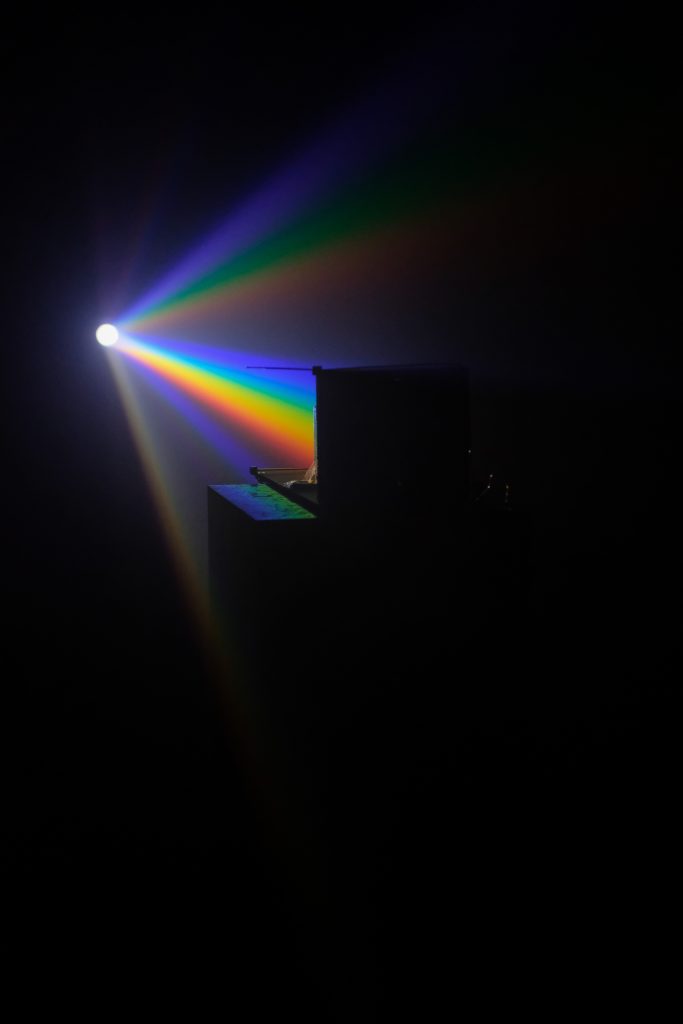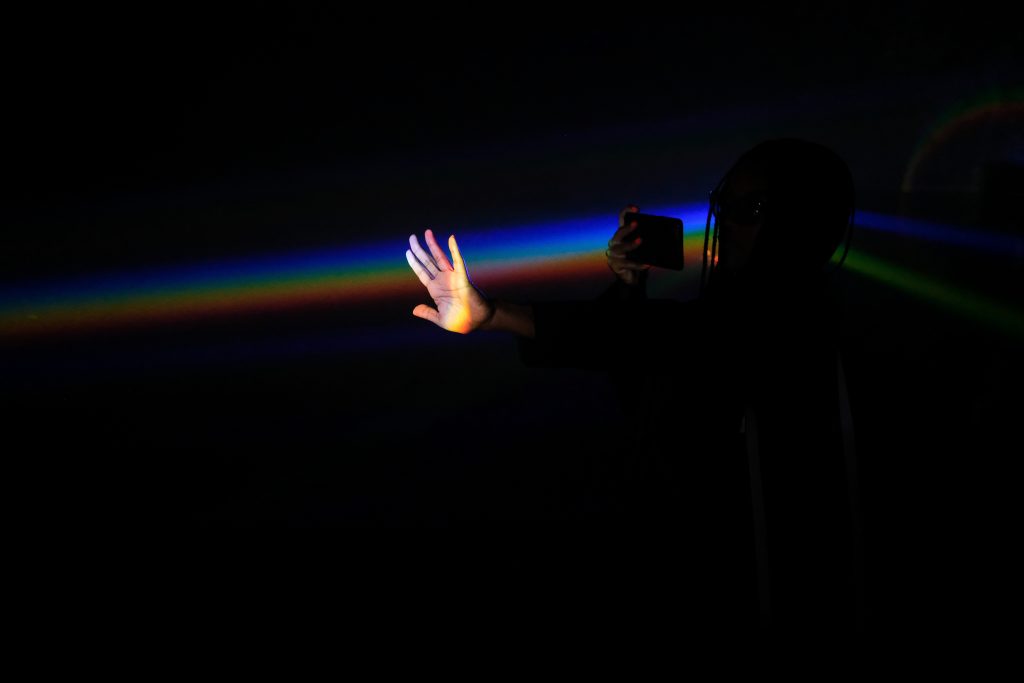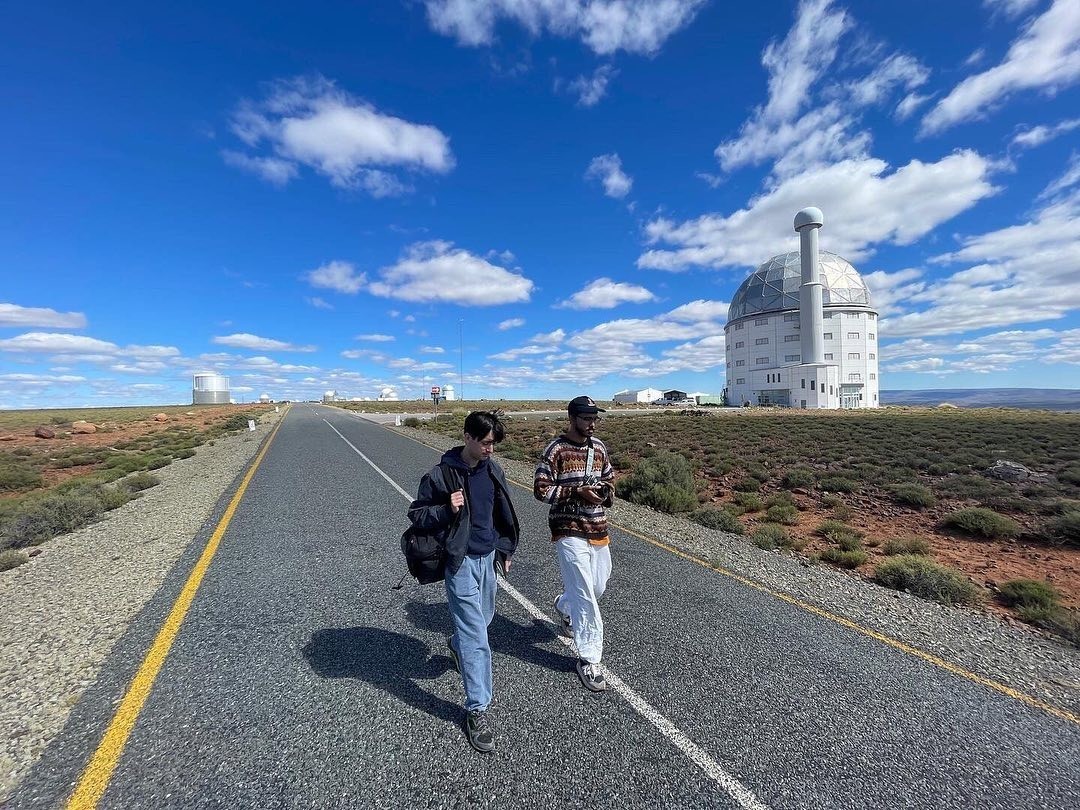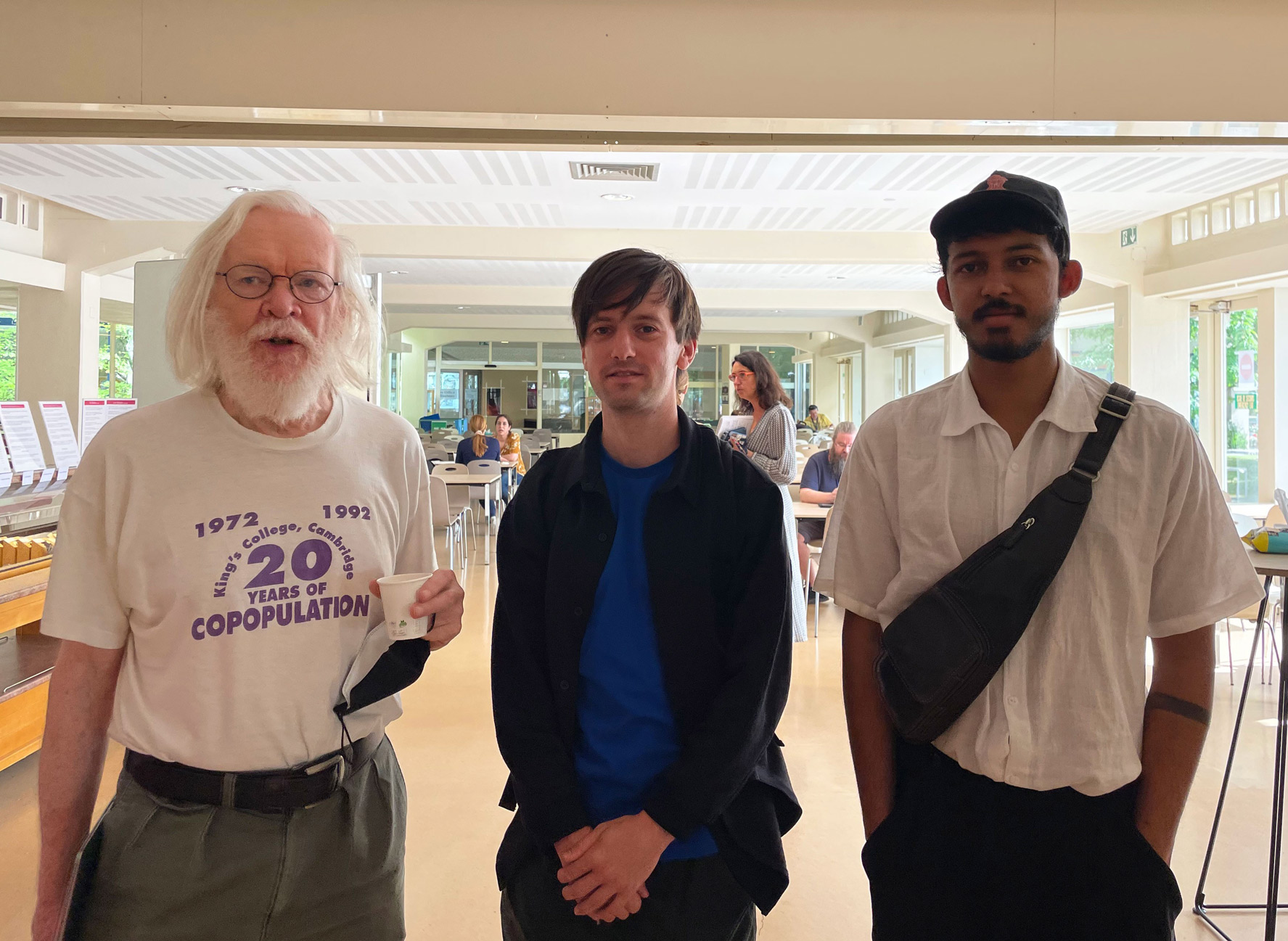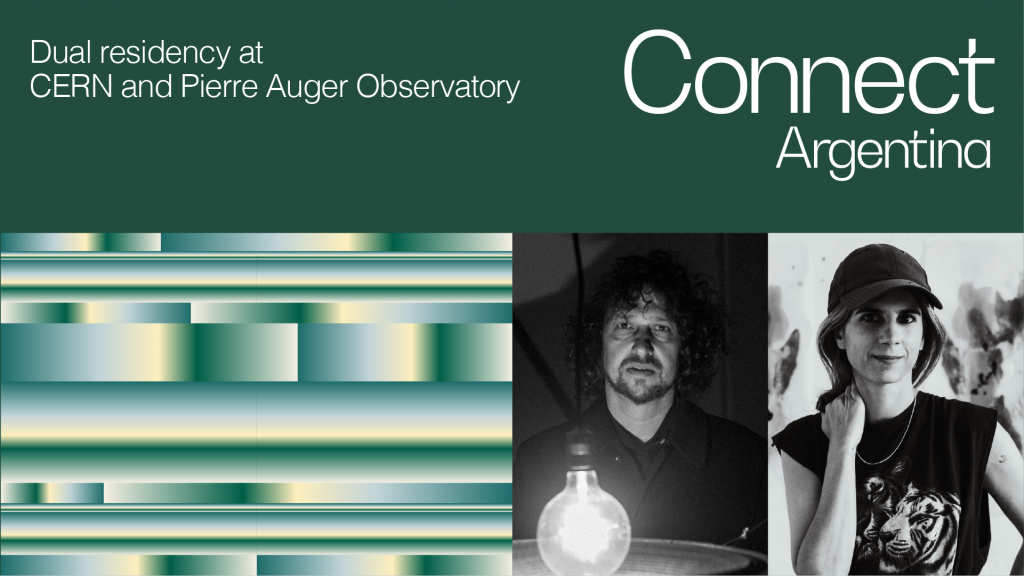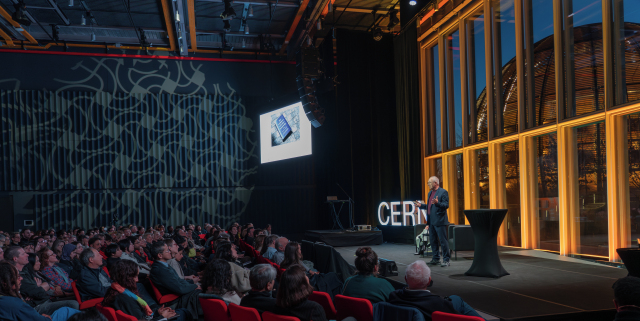- Author
- Ana Prendes

Event Horizon is the result of Kamil’s residency at CERN, SAAO, and SARAO and his artistic research into fundamental physics, modern African astronomy, and ancient indigenous cosmologies
In Event Horizon, Hassim takes us on a journey through the mysteries of black holes and the cosmic principles that govern our universe. At the heart of this work lies an exploration of how information permeates social, cultural, and physical systems through concepts drawn from astrophysics: the information paradox, the holographic principle and the event horizon.
Kamil’s work invites us to engage with these complex ideas through a sensorial experience. By using defunct astronomical lenses, his installation creates a mesmerising optical effect that immerses audiences in an experience designed to facilitate a process of ‘embodied knowledge’: one that resonates on a visceral level and deepens our connection to the cosmos. The notion of embodied knowledge is central to many indigenous knowledge systems, which hold that knowledge is not solely acquired through reason, but through direct experience and sensory engagement.
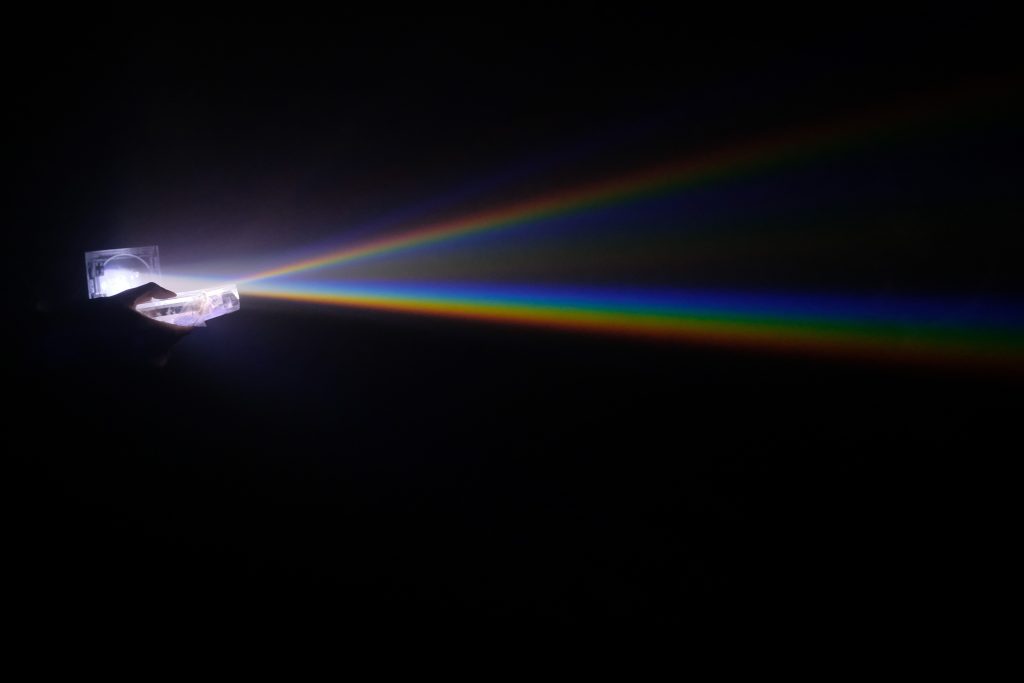
The event horizon is the boundary around a black hole beyond which nothing can escape. It is a point of no return, where light and therefore information is trapped. The holographic principle suggests that all the information contained within a region of space can be encoded on its boundary. This principle implies that the universe may function like a hologram, with three-dimensional information projected onto a two-dimensional surface.

In cultural systems shaped by colonial histories, the erasure of knowledge and suppression of memory mirror these astrophysical pardoxes. Colonial regimes disrupted indigenous knowledge systems and imposed Western epistemologies. The information paradox – where data seems lost inside black holes despite the laws of quantum mechanics insisting otherwise –becomes a powerful metaphor for how cultural knowledge can be obscured or denied, yet may persist in unexpected ways.
Through its use of prismatic light, which shifts depending on the viewer’s perspective, Event Horizon ensures that no two observers see the same image. This echoes both a principle in theoretical physics and a belief shared by many indigenous cosmologies: that observation is a creative act, and reality unfolds in relation to the observer. Through its immersive experience, the installation encourages a form of embodied knowledge while engaging with the complex cultural and scientific concepts associated with black holes. By bridging art, science, and indigenous knowledge systems, the exhibition opens space for dialogue around how knowledge is shaped, shared, or suppressed.
This exhibition is the result of Kamil’s Connect South Africa residency at CERN, SAAO Astronomy, and SARAO. Connect South Africa is part of Connect, the collaboration framework between Arts at CERN and the Swiss Arts Council Pro Helvetia that serves as a platform for dialogue between artistic and scientific communities worldwide.
Event Horizon is presented in collaboration with the South African Astronomical Observatory, Constitution Hill, and WhereWithAll, and curated by Bulumko Mbete. Supported by the National Arts Council of South Africa as part of the Presidential Employment Stimulus Package (PESP).
